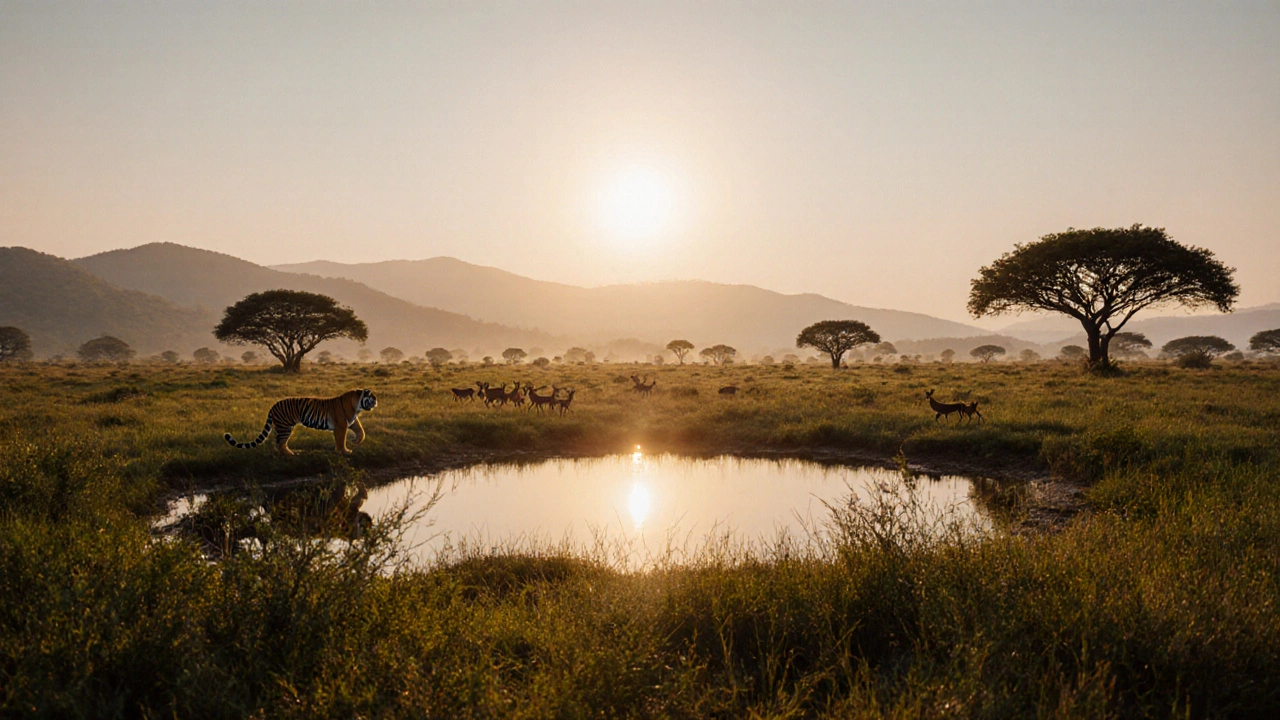
Learn which animals can live in a wildlife sanctuary, the legal rules, common species, and tips for starting or visiting a sanctuary.
When talking about wildlife sanctuary animals, the living beings that call protected reserves home. Also known as sanctuary fauna, they range from the majestic Bengal tiger to colorful kingfishers. Wildlife sanctuaries, designated areas that conserve habitats and species are scattered across the subcontinent, each shaped by the Indian states, regional governments that manage land and policies that host them. Understanding this ecosystem helps you plan a trip that respects both nature and local culture.
Every species you’ll spot contributes to the larger picture of biodiversity, the variety of life that keeps ecosystems healthy. High biodiversity means robust food chains, better climate resilience, and richer experiences for visitors. Conservation efforts—like anti‑poaching patrols and habitat restoration—rely on the presence of flagship animals such as elephants, leopards, and migratory birds. When you see a herd of gaurs grazing near a waterhole, you’re witnessing the result of years of focused conservation work that balances human needs and wildlife survival.
Travelers often wonder how to enjoy these encounters safely. Recent safety guides for Indian tourism stress basic precautions: keep a safe distance, follow ranger instructions, and carry a basic first‑aid kit. If you’re heading to a sanctuary in the monsoon season, pack waterproof gear; during the hot months, bring plenty of water and sun protection. These practical tips echo the advice found in broader travel safety articles, ensuring your adventure stays enjoyable and risk‑free.
One of the biggest draws is the sheer variety of sanctuaries across Indian states. States like Madhya Pradesh, Karnataka, and Assam boast the highest numbers of protected areas, each offering distinct wildlife experiences—from the dense jungles of Pench where tigers roam, to the mangrove‑rich Bhitarkanika teeming with crocodiles. Knowing which state aligns with the species you want to see lets you tailor your itinerary efficiently, saving time and money.
Beyond the big cats and elephants, smaller creatures add depth to the sanctuary experience. Spotting a hornbill perched in a tea‑colored forest, or catching a glimpse of a shy pangolin, reminds you that wildlife sanctuary animals include both charismatic megafauna and the often‑overlooked critters that sustain ecosystems. Guides frequently highlight these lesser‑known species to encourage responsible birdwatching and nocturnal safaris, expanding your view of what a sanctuary can offer.
If you’re planning a multi‑state wildlife road trip, consider linking sanctuary visits with nearby cultural attractions. For instance, a stop in Rajasthan’s Ranthambore not only provides tiger sightings but also puts you close to historic forts and heritage sites. This blend of nature and culture mirrors trends in travel articles that pair wildlife tours with heritage exploration, giving you a richer, more varied vacation.
Managing a sanctuary involves a complex web of stakeholders: government bodies, local communities, NGOs, and tourism operators. Their collective effort dictates how well wildlife sanctuary animals thrive. Community‑based tourism initiatives often pay locals for guiding services, which incentivizes protection of the animals they depend on. Understanding this dynamic helps you appreciate the socioeconomic backdrop of each visit.
Finally, as you scan through the list of articles below, you’ll notice a mix of deep‑dive sanctuary guides, safety tips, and broader travel pieces. Together they form a toolkit for anyone eager to see India’s wildlife sanctuary animals up close while staying informed about costs, seasonal considerations, and responsible travel habits. Dive in, and let the diverse world of India’s protected fauna inspire your next adventure.

Learn which animals can live in a wildlife sanctuary, the legal rules, common species, and tips for starting or visiting a sanctuary.